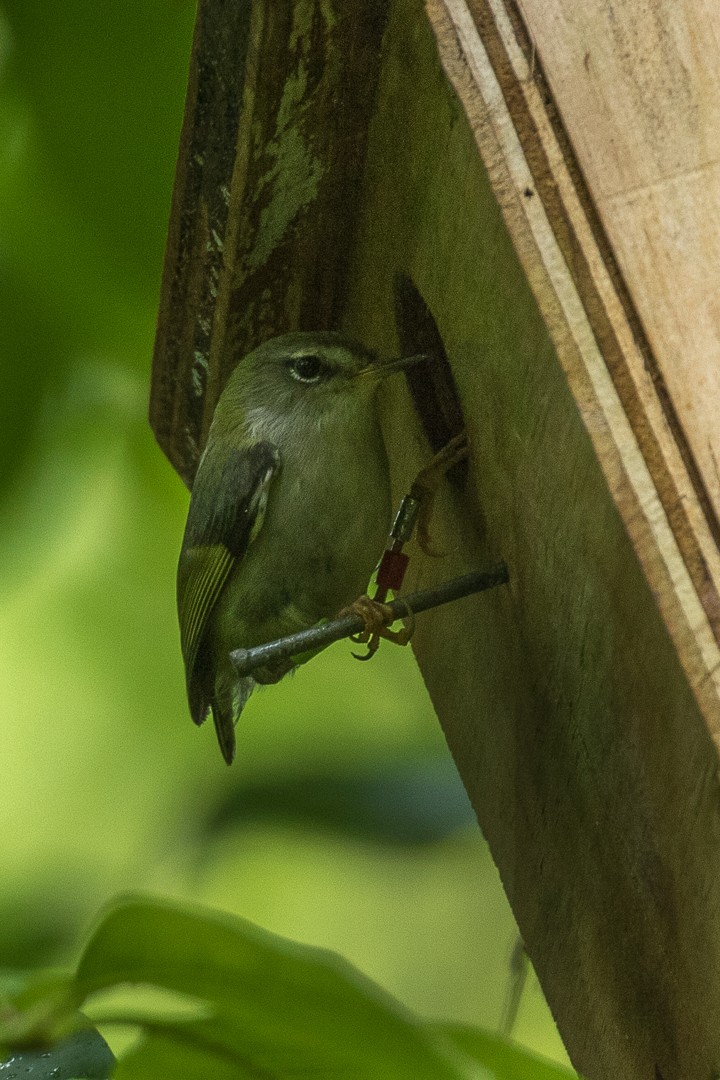Rifleman
A species of Rifleman Scientific name : Acanthisitta chloris Genus : Rifleman
Rifleman, A species of Rifleman
Botanical name: Acanthisitta chloris
Genus: Rifleman
Content
Description General Info
 Photo By Francesco Veronesi , used under CC-BY-SA-2.0 /Cropped and compressed from original
Photo By Francesco Veronesi , used under CC-BY-SA-2.0 /Cropped and compressed from original Description
The rifleman is New Zealand's smallest endemic bird, with fully grown adults reaching around 7 to 9 cm (2.8–3.5 in) in length. Male birds typically weigh around 6 g (0.21 oz), females 7 g (0.25 oz). The bill of the female is also longer, as is its hind claw. The difference in between the sexes may be ecological in its origin, reflecting different foraging niches the two sexes have during times when they have high energy demands (feeding chicks). The male rifleman is bright green above, with a yellow-green rump. The wings are black, green and white with a yellow band across the flight feathers. The tail is black with a whitish tip. The throat, breast and belly are white, sometimes with a yellow wash, and the flanks are yellowish. The female is of a more somber brownish tone and her head and back are flecked with ochre. Both birds have white eyebrow stripes. They have short, rounded wings, a very short tail and a long thin awl-like bill which is brownish and slightly upturned for insertion into cracks. The rifleman flies quickly with a wing beat producing a characteristic humming sound like a hummingbird. 
Size
9 cm
Nest Placement
Tree
Feeding Habits
Rifleman primarily feeds on insects, including maggots, foraging on tree trunks and forest floors. It uniquely spirals up trees to hunt, then glides to the next, indicating efficient foraging adaptations.
Habitat
Rifleman thrives in thinly wooded forests, particularly favoring beech forests, and is also accustomed to habitats like scrublands and older pine plantations rich in native flora. Preferring upland environments, they dwell at elevations reaching approximately 1550 meters. Their limited flight ability generally excludes them from open landscapes, and they seldom frequent urban green spaces.
Dite type
Insectivorous
General Info
Feeding Habits
Bird food type
Distribution Area
The true habitat of this bird is thinly wooded forests, but other similar New Zealand species live near rocky outcrops. The rifleman is the most widespread species of acanthisittid in the two main islands of New Zealand. However, the bird occurs only rarely in latitudes north of Te Aroha. The North Island subspecies, A. c. granti, occurs mainly in lowland tawa forest, while the South Island subspecies, A. c. chloris, is found in high-altitude beech forest or lowland areas forested with podocarp. The rifleman covers the same or similar territory every day, which a male/female pair defend. They can only fly short distances, meaning they are unlikely to cross open areas. The bird was once common across New Zealand, but the fragmentation of forests from land development has meant less habitat and more isolated populations. 
Species Status
Not globally threatened.
Scientific Classification
Phylum
Chordates Class
Birds Order
Perching birds Family
New zealand wrens Genus
Rifleman Species
Rifleman